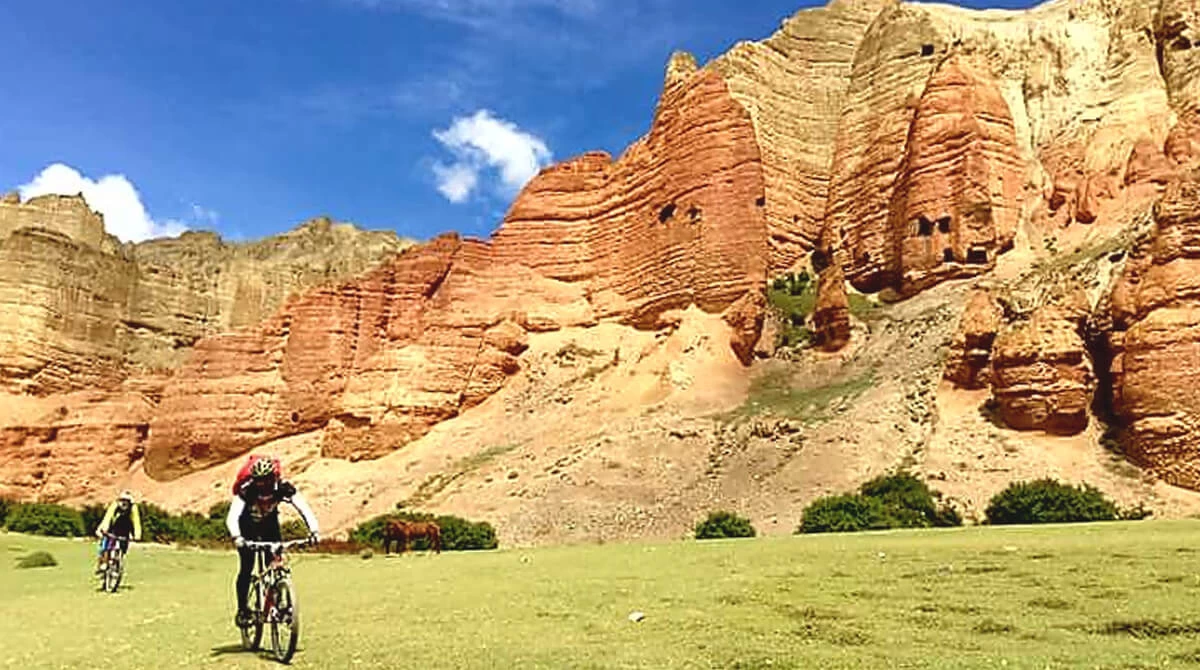Mustang the Forbidden Kingdom (Mountain Biking).
The ‘Last Forbidden Kingdom’ refers to the Mustang district of Nepal, a region that was a restricted area until 1992 and shares a border with Tibet. Mustang boasts a rich culture and heritage, with people living in isolated villages and continuing their traditional way of life. The culture and customs of Mustang closely resemble those of Tibet. The region holds significant spiritual value, with most people practicing Buddhism. You will find Stupas, Mani walls, Monasteries, and Chortens scattered throughout the area. During our journey, we will visit the famous Muktinath Temple, located in lower Mustang. This sacred site is revered by both Hindus and Buddhists. The traditional houses in Mustang add to the charm of the landscape, which is nothing short of breathtaking. The terraced fields and valleys are particularly beautiful during the farming season, though large stretches of barren land give the region a semi-desert, arid appearance. In some places, wind erosion has shaped the mountains into stunning, otherworldly forms. The colours of the mountains are unique, and ancient caves can be found in the cliffs. The region’s flora includes alpine grasses, shrubs, and thorny bushes, and it serves as a habitat for snow leopards, blue sheep, and Himalayan Tahr. These features make Mustang unlike any other place in the world.
The people of Mustang are predominantly Buddhist, and the culture here is both unique and deeply rooted in tradition. One of the great advantages of traveling by mountain bike is the ability to explore every corner of this remarkable region and witness the local lifestyle firsthand. Additionally, the spectacular views of the Himalayas will captivate anyone fortunate enough to visit.
Our mountain biking adventure will take us across various passes, with altitudes exceeding 3,000 meters. As such, it’s important to be physically fit and prepared for the challenges of high-altitude conditions, including altitude sickness.
Highlights:
- Mustang was once known as the ‘Forbidden Kingdom’. Its people, culture, and natural beauty are rich and unique, earning it the nickname ‘Little Tibet’.
- Located in the trans-Himalayan region, Mustang was a restricted area until 1992. Although it is now
- open to visitors, there is an entry fee of approximately USD 500 per person.
- To visit, you will need to obtain a special permit. This requires submitting a scanned copy of your passport in advance, and on the day of your arrival, you must present the original passport at the permit-issuing office before heading to Mustang.
- The region offers many fascinating sites to explore, including ancient monasteries, caves, and a deeply rooted Buddhist culture and religion.
- Muktinath, a sacred site for both Hindus and Buddhists, is a must-visit during your trip.
- Agriculture and animal husbandry are the primary occupations of the people living here.
- The Kali Gandaki River is the main waterway in the region, and Mustang is also home to the world’s deepest gorge.




